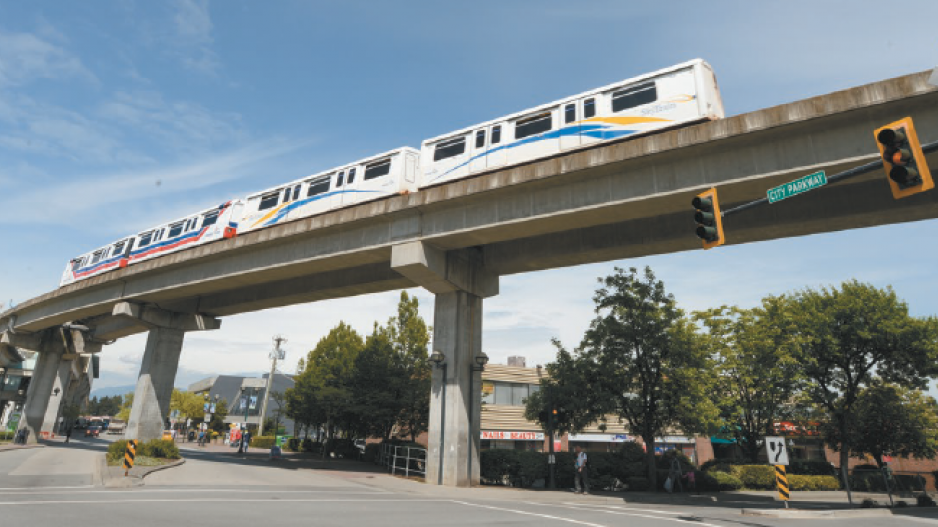Dense yields
While municipalities digest the results of November 15th’s civic election results, investors are keeping their eyes fixed on the big picture with the annual spate of forecasts filling inboxes and conference halls with their prognostications.
The season might be said to have kicked off in earnest in late October, when CBRE Ltd. chairman John O’Bryan addressed a breakfast gathering ahead of the Vancouver Real Estate Leasing Conference.
Amid a season in which most reports are pointing to another year of stable but lacklustre growth, O’Bryan spoke of the rise of “superprime assets” – in short, assets that are not only scarce, and trophy properties in themselves, but also offer steady income growth in a market where cash rules.
“Capital is rampant,” he said. (For its part, the capital markets group of Jones Lang LaSalle estimates a dozen dollars are chasing every dollar of property to be had.)
On the other hand, ongoing uncertainty makes investors prize any asset that delivers cash rather than defers payback.
And how are investors hoping to realize that cash?
By boosting rental rates and, if necessary (and possible), density.
And the possibilities are very much governed by transit service, O’Bryan said.
“[It] is yet another reason why transportation is such an increasingly intrinsic factor in the winners and losers of investment real estate,” he told his audience.
Transit makes a destination desirable and, in so doing, contributes to the transformation of suburban hubs. But it does so because younger workers don’t like to be inconvenienced. They’re gravitating to urban centres, and expect the world at their doors.
“The combination of housing choices by the new generation of workers, and less tolerance for the cost and inconvenience of travel, have provided the impetus for a wave of downtown versus suburban development,” O’Bryan said.
Transit systems need to develop appropriately – something O’Bryan says depends on the support of all three levels of government. With the referendum on the region’s transit system pending, O’Bryan’s words sound as much like an admonition as a recipe for success.
Retail churn
One of the continuing topics of discussion at events this year resurfaced during O’Bryan’s comments to the CBRE Ltd. breakfast gathering: whither retail?
Retail may not be withering as a real estate segment, but it’s definitely being reconfigured. (Or is that “remerchandised”?)
“Retail has proven to be anything but predictable, and most observers are struggling to reconcile technology and shopping preferences,” O’Bryan said.
The struggle seems set to continue for the foreseeable future, with CBRE forecasting tough times for street-front shops caught between property tax increases and cost-conscious consumers willing to comparison shop in what Jennifer Lee, a partner in the Toronto office of international consulting firm Deloitte, called the “omni-channel” environment.
“The twin challenges of rapidly escalating rents and the often-ignored resulting increase in property taxes will, when combined together, severely challenge the profitability of smaller, niche tenants,” O’Bryan said.
“For-lease signs are appearing in areas that have not seen vacancies for many years.”
Turnover has been apparent on strips from Robson Street to West 41st Avenue, with many spaces viable only for the most well-known brand names.
Meanwhile, power centres are under pressure as traditional tenants shift business online and logistics facilities become fulfilment centres.
“It is becoming increasingly difficult to distinguish between where the world of logistics ends and traditional retail begins,” O’Bryan said. “You cannot discuss one without the other.”
Multi-family mojo
“Multi-family is highly desired by investors of all stripes,” according to O’Bryan – but developers like it, too.
Multi-family developments led the picks of panellists the Urban Land Institute convened to discuss its annual Emerging Trends in Real Estate report, produced in partnership with PwC.
The latest edition of the B.C. Major Projects Inventory underscores multi-family’s favour. Of 25 new projects added to the inventory in the second quarter of 2014, 18 are in part or entirely devoted to residential. The remainder – all but one of which are located outside the Lower Mainland – are non-residential, becoming larger and more industrial the farther north they’re located.
By far the largest is TransCanada Corp.’s proposed 260-kilometre pipeline from Dawson Creek to Summit Lake, costing an estimated $1.9 billion. •




